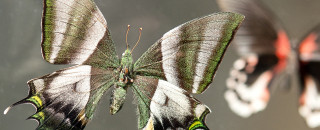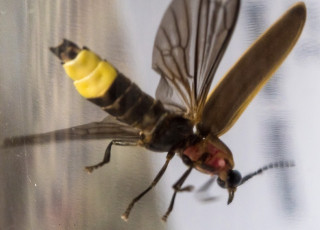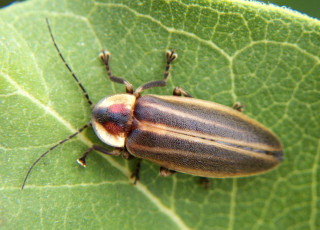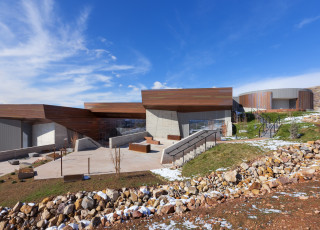Pearce Family Donates 16,000 Butterflies to Museum
SALT LAKE CITY – A collection of 16,000 butterflies and moths, amassed over five decades by Dr. James Pearce of Salt Lake City and donated by his family to the Natural History Museum of Utah, the University of Utah, prior to opening of the Rio Tinto Center, not only speaks to the diversity of butterflies around the world, but to their history across the Wasatch Front.
The Museum’s collections manager of invertebrates, Christy Bills; the wife of the late Dr. Pearce, Virginia Pearce; and some her grandchildren will be in the community room of the Museum to unveil the donated collection on Saturday, May 5, from 1-3 p.m.
All 250 of the spectacular butterflies found swirling up the Collections Wall of the Museum Canyon came from his donated collection.
Within in the collection were many gorgeous exotics, like the dazzling Blue Morpho from South America, that were purchased for his collection. But, Dr. Pearce was also an avid collector himself, and he meticulously pinned and documented each of the specimens he collected. A significant portion of the butterflies in the collection were ones he collected around the Salt Lake Valley, starting in the 1950’s when he was a young child. Dr. Pearce passed away in October, 2009.
“It is truly an honor that the Pearce family trusts us with his remarkable collection,” noted Bills. “Documentation of the butterflies along the Wasatch Front is not that extensive. So, the breadth and depth of this collection, in terms of time and specimens, helps us tell the story of our ecosystem here in the valley.”
With spring time around the corner, the vast collection is a colorful and dynamic example of the types of butterflies and moths that outdoor enthusiasts can find around the valley in the coming months. The Western Tiger Swallowtail, Mourning Cloak and Milberts Tortiseshell are among the many local butterflies prominently featured in Dr. Pearce’s collection.
“This collection of butterflies represents a coming together of numerous things,” said Mrs. Pearce. “It combined his love of being outdoors; doing things with other people, especially family; and his interest in science.
“Once the children left home, he was able to spend a lot of time spreading the insects that he had collected over time. When he would open up the envelope, he would see the place and the date and he instantly remembered that trip and collecting with friends and family on that day.”
The Museum’s entomology collection is home to 200,000 specimens that were collected over a 120-year period. It houses a tremendous amount of modern specimens (from 1990-2000’s) and it contains specimens from the early 20th century (1900-1930’s). However, the Pearce Collection has specimens that were collected over five decades, beginning in the 1950’s. Not only does Dr. Pearce’s collection help fill a gap in the Museum’s collection, his thorough documentation also adds research value to the specimens he collected.
“Butterflies are a good indicator of changing climates,” Bills said of the research value inherent to the Pearce Collection. “If butterflies are found at new elevations, have a different range of habitat, or if they hatch at a different time of the year, then it can be a signal of several possibilities. It may be the result of changing climate, an aberration in the weather pattern, or a change in the plant ranges since butterflies are often closely linked with their host plants.”
The Natural History Museum of Utah, the University of Utah, is one of the leading scientific research and cultural institutions in the Intermountain West. Established in 1963, the Museum cares for over 1.2 million objects and offers innovative exhibitions and educational programs to thousands of residents and visitors each year, including traveling and permanent exhibits, special events and other programs. The Museum also offers a variety of outreach programs to communities and schools throughout Utah, reaching every school district in the state annually. The Museum has an active research program with more than 30 scientists and 10 field expeditions each year.
Press contacts and links
-
Press Contact
Beth Mitchell



